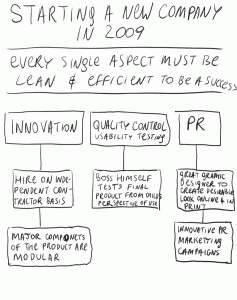Hint: Don’t tell your kids that they are. More than three decades of research shows that a focus on effort—not on intelligence or ability—is key to success in school and in life
By Carol S. Dweck
Courtesy: Scientific America
A brilliant student, Jonathan sailed through grade school. He completed his assignments easily and routinely earned As. Jonathan puzzled over why some of his classmates struggled, and his parents told him he had a special gift. In the seventh grade, however, Jonathan suddenly lost interest in school, refusing to do homework or study for tests. As a consequence, his grades plummeted. His parents tried to boost their son’s confidence by assuring him that he was very smart. But their attempts failed to motivate Jonathan (who is a composite drawn from several children). Schoolwork, their son maintained, was boring and pointless.
Our society worships talent, and many people assume that possessing superior intelligence or ability—along with confidence in that ability—is a recipe for success. In fact, however, more than 30 years of scientific investigation suggests that an overemphasis on intellect or talent leaves people vulnerable to failure, fearful of challenges and unwilling to remedy their shortcomings.
The result plays out in children like Jonathan, who coast through the early grades under the dangerous notion that no-effort academic achievement defines them as smart or gifted. Such children hold an implicit belief that intelligence is innate and fixed, making striving to learn seem far less important than being (or looking) smart. This belief also makes them see challenges, mistakes and even the need to exert effort as threats to their ego rather than as opportunities to improve. And it causes them to lose confidence and motivation when the work is no longer easy for them.
Praising children’s innate abilities, as Jonathan’s parents did, reinforces this mind-set, which can also prevent young athletes or people in the workforce and even marriages from living up to their potential. On the other hand, our studies show that teaching people to have a “growth mind-set,” which encourages a focus on effort rather than on intelligence or talent, helps make them into high achievers in school and in life.
The Opportunity of Defeat
I first began to investigate the underpinnings of human motivation—and how people persevere after setbacks—as a psychology graduate student at Yale University in the 1960s. Animal experiments by psychologists Martin Seligman, Steven Maier and Richard Solomon of the University of Pennsylvania had shown that after repeated failures, most animals conclude that a situation is hopeless and beyond their control. After such an experience, the researchers found, an animal often remains passive even when it can affect change—a state they called learned helplessness.
People can learn to be helpless, too, but not everyone reacts to setbacks this way. I wondered: Why do some students give up when they encounter difficulty, whereas others who are no more skilled continue to strive and learn? One answer, I soon discovered, lay in people’s beliefs about why they had failed.
In particular, attributing poor performance to a lack of ability depresses motivation more than does the belief that lack of effort is to blame. In 1972, when I taught a group of elementary and middle school children who displayed helpless behavior in school that a lack of effort (rather than lack of ability) led to their mistakes on math problems, the kids learned to keep trying when the problems got tough. They also solved many of the problems even in the face of difficulty. Another group of helpless children who were simply rewarded for their success on easy problems did not improve their ability to solve hard math problems. These experiments were an early indication that a focus on effort can help resolve helplessness and engender success.
Subsequent studies revealed that the most persistent students do not ruminate about their own failure much at all but instead think of mistakes as problems to be solved. At the University of Illinois in the 1970s I, along with my then graduate student Carol Diener, asked 60 fifth graders to think out loud while they solved very difficult pattern-recognition problems. Some students reacted defensively to mistakes, denigrating their skills with comments such as “I never did have a good rememory,” and their problem-solving strategies deteriorated.
Others, meanwhile, focused on fixing errors and honing their skills. One advised himself: “I should slow down and try to figure this out.” Two schoolchildren were particularly inspiring. One, in the wake of difficulty, pulled up his chair, rubbed his hands together, smacked his lips and said, “I love a challenge!” The other, also confronting the hard problems, looked up at the experimenter and approvingly declared, “I was hoping this would be informative!” Predictably, the students with this attitude outperformed their cohorts in these studies.
Two Views of Intelligence
Several years later I developed a broader theory of what separates the two general classes of learners—helpless versus mastery-oriented. I realized that these different types of students not only explain their failures differently, but they also hold different “theories” of intelligence. The helpless ones believe that intelligence is a fixed trait: you have only a certain amount, and that’s that. I call this a “fixed mind-set.” Mistakes crack their self-confidence because they attribute errors to a lack of ability, which they feel powerless to change. They avoid challenges because challenges make mistakes more likely and looking smart less so. Like Jonathan, such children shun effort in the belief that having to work hard means they are dumb.
The mastery-oriented children, on the other hand, think intelligence is malleable and can be developed through education and hard work. They want to learn above all else. After all, if you believe that you can expand your intellectual skills, you want to do just that. Because slipups stem from a lack of effort, not ability, they can be remedied by more effort. Challenges are energizing rather than intimidating; they offer opportunities to learn. Students with such a growth mind-set, we predicted, were destined for greater academic success and were quite likely to outperform their counterparts.
We validated these expectations in a study published in early 2007. Psychologists Lisa Blackwell of Columbia University and Kali H. Trzesniewski of Stanford University and I monitored 373 students for two years during the transition to junior high school, when the work gets more difficult and the grading more stringent, to determine how their mind-sets might affect their math grades. At the beginning of seventh grade, we assessed the students’ mind-sets by asking them to agree or disagree with statements such as “Your intelligence is something very basic about you that you can’t really change.” We then assessed their beliefs about other aspects of learning and looked to see what happened to their grades.
As we had predicted, the students with a growth mind-set felt that learning was a more important goal in school than getting good grades. In addition, they held hard work in high regard, believing that the more you labored at something, the better you would become at it. They understood that even geniuses have to work hard for their great accomplishments. Confronted by a setback such as a disappointing test grade, students with a growth mind-set said they would study harder or try a different strategy for mastering the material.
The students who held a fixed mind-set, however, were concerned about looking smart with little regard for learning. They had negative views of effort, believing that having to work hard at something was a sign of low ability. They thought that a person with talent or intelligence did not need to work hard to do well. Attributing a bad grade to their own lack of ability, those with a fixed mind-set said that they would study less in the future, try never to take that subject again and consider cheating on future tests.
Such divergent outlooks had a dramatic impact on performance. At the start of junior high, the math achievement test scores of the students with a growth mind-set were comparable to those of students who displayed a fixed mind-set. But as the work became more difficult, the students with a growth mind-set showed greater persistence. As a result, their math grades overtook those of the other students by the end of the first semester—and the gap between the two groups continued to widen during the two years we followed them.
Along with Columbia psychologist Heidi Grant, I found a similar relation between mind-set and achievement in a 2003 study of 128 Columbia freshman premed students who were enrolled in a challenging general chemistry course. Although all the students cared about grades, the ones who earned the best grades were those who placed a high premium on learning rather than on showing that they were smart in chemistry. The focus on learning strategies, effort and persistence paid off for these students.
Confronting Deficiencies
A belief in fixed intelligence also makes people less willing to admit to errors or to confront and remedy their deficiencies in school, at work and in their social relationships. In a study published in 1999 of 168 freshmen entering the University of Hong Kong, where all instruction and coursework are in English, three Hong Kong colleagues and I found that students with a growth mind-set who scored poorly on their English proficiency exam were far more inclined to take a remedial English course than were low-scoring students with a fixed mind-set. The students with a stagnant view of intelligence were presumably unwilling to admit to their deficit and thus passed up the opportunity to correct it.
A fixed mind-set can similarly hamper communication and progress in the workplace by leading managers and employees to discourage or ignore constructive criticism and advice. Research by psychologists Peter Heslin and Don VandeWalle of Southern Methodist University and Gary Latham of the University of Toronto shows that managers who have a fixed mind-set are less likely to seek or welcome feedback from their employees than are managers with a growth mind-set. Presumably, managers with a growth mind-set see themselves as works-in-progress and understand that they need feedback to improve, whereas bosses with a fixed mind-set are more likely to see criticism as reflecting their underlying level of competence. Assuming that other people are not capable of changing either, executives with a fixed mind-set are also less likely to mentor their underlings. But after Heslin, VandeWalle and Latham gave managers a tutorial on the value and principles of the growth mind-set, supervisors became more willing to coach their employees and gave more useful advice.
Mind-set can affect the quality and longevity of personal relationships as well, through people’s willingness—or unwillingness—to deal with difficulties. Those with a fixed mind-set are less likely than those with a growth mind-set to broach problems in their relationships and to try to solve them, according to a 2006 study I conducted with psychologist Lara Kammrath of Wilfrid Laurier University in Ontario. After all, if you think that human personality traits are more or less fixed, relationship repair seems largely futile. Individuals who believe people can change and grow, however, are more confident that confronting concerns in their relationships will lead to resolutions.
Proper Praise
How do we transmit a growth mind-set to our children? One way is by telling stories about achievements that result from hard work. For instance, talking about math geniuses who were more or less born that way puts students in a fixed mind-set, but descriptions of great mathematicians who fell in love with math and developed amazing skills engenders a growth mind-set, our studies have shown. People also communicate mind-sets through praise. Although many, if not most, parents believe that they should build up a child by telling him or her how brilliant and talented he or she is, our research suggests that this is misguided.
In studies involving several hundred fifth graders published in 1998, for example, Columbia psychologist Claudia M. Mueller and I gave children questions from a nonverbal IQ test. After the first 10 problems, on which most children did fairly well, we praised them. We praised some of them for their intelligence: “Wow … that’s a really good score. You must be smart at this.” We commended others for their effort: “Wow … that’s a really good score. You must have worked really hard.”
We found that intelligence praise encouraged a fixed mind-set more often than did pats on the back for effort. Those congratulated for their intelligence, for example, shied away from a challenging assignment—they wanted an easy one instead—far more often than the kids applauded for their effort. (Most of those lauded for their hard work wanted the difficult problem set from which they would learn.) When we gave everyone hard problems anyway, those praised for being smart became discouraged, doubting their ability. And their scores, even on an easier problem set we gave them afterward, declined as compared with their previous results on equivalent problems. In contrast, students praised for their effort did not lose confidence when faced with the harder questions, and their performance improved markedly on the easier problems that followed.
Making Up Your Mind-set
In addition to encouraging a growth mind-set through praise for effort, parents and teachers can help children by providing explicit instruction regarding the mind as a learning machine. Blackwell, Trzesniewski and I recently designed an eight-session workshop for 91 students whose math grades were declining in their first year of junior high. Forty-eight of the students received instruction in study skills only, whereas the others attended a combination of study skills sessions and classes in which they learned about the growth mind-set and how to apply it to schoolwork.
In the growth mind-set classes, students read and discussed an article entitled “You Can Grow Your Brain.” They were taught that the brain is like a muscle that gets stronger with use and that learning prompts neurons in the brain to grow new connections. From such instruction, many students began to see themselves as agents of their own brain development. Students who had been disruptive or bored sat still and took note. One particularly unruly boy looked up during the discussion and said, “You mean I don’t have to be dumb?”
As the semester progressed, the math grades of the kids who learned only study skills continued to decline, whereas those of the students given the growth-mind-set training stopped falling and began to bounce back to their former levels. Despite being unaware that there were two types of instruction, teachers reported noticing significant motivational changes in 27 percent of the children in the growth mind-set workshop as compared with only 9 percent of students in the control group. One teacher wrote: “Your workshop has already had an effect. L [our unruly male student], who never puts in any extra effort and often doesn’t turn in homework on time, actually stayed up late to finish an assignment early so I could review it and give him a chance to revise it. He earned a B+. (He had been getting Cs and lower.)”
Other researchers have replicated our results. Psychologists Catherine Good, then at Columbia, and Joshua Aronson and Michael Inzlicht of New York University reported in 2003 that a growth mind-set workshop raised the math and English achievement test scores of seventh graders. In a 2002 study Aronson, Good (then a graduate student at the University of Texas at Austin) and their colleagues found that college students began to enjoy their schoolwork more, value it more highly and get better grades as a result of training that fostered a growth mind-set.
We have now encapsulated such instruction in an interactive computer program called “Brainology,” which should be more widely available by mid-2008. Its six modules teach students about the brain—what it does and how to make it work better. In a virtual brain lab, users can click on brain regions to determine their functions or on nerve endings to see how connections form when people learn. Users can also advise virtual students with problems as a way of practicing how to handle schoolwork difficulties; additionally, users keep an online journal of their study practices.
New York City seventh graders who tested a pilot version of Brainology told us that the program had changed their view of learning and how to promote it. One wrote: “My favorite thing from Brainology is the neurons part where when u [sic] learn something there are connections and they keep growing. I always picture them when I’m in school.” A teacher said of the students who used the program: “They offer to practice, study, take notes, or pay attention to ensure that connections will be made.”
Teaching children such information is not just a ploy to get them to study. People do differ in intelligence, talent and ability. And yet research is converging on the conclusion that great accomplishment, and even what we call genius, is typically the result of years of passion and dedication and not something that flows naturally from a gift. Mozart, Edison, Curie, Darwin and Cézanne were not simply born with talent; they cultivated it through tremendous and sustained effort. Similarly, hard work and discipline contribute much more to school achievement than IQ does.
Such lessons apply to almost every human endeavor. For instance, many young athletes value talent more than hard work and have consequently become unteachable. Similarly, many people accomplish little in their jobs without constant praise and encouragement to maintain their motivation. If we foster a growth mind-set in our homes and schools, however, we will give our children the tools to succeed in their pursuits and to become responsible employees and citizens.




 Courtesy: by MG Siegler Techcrunch.com
Courtesy: by MG Siegler Techcrunch.com








